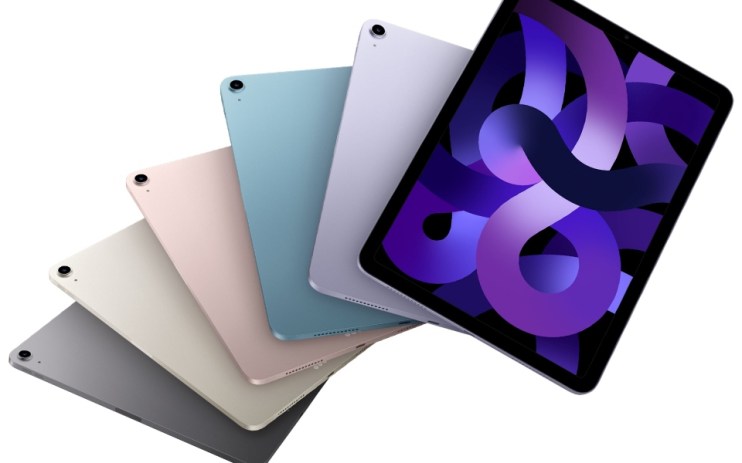iPad Air 2022 review: A worthy follow-up to the best tablet in years

While the launch of a new Apple device is usually pretty difficult to miss, you could be forgiven for overlooking the iPad that hit UK shelves in March 2020, in the week leading up to the first lockdown.
That would have been a shame, however, because the iPad Air 2020 (“Air” being Apple’s mid-range iPad, sandwiched between the Pro and basic versions) was the single biggest improvement in the line-up since the 2018 update of the iPad Pro.
It was the refresh Apple needed in a category that had begun to feel a little stale. Since its release in 2010, the iPad expanded the market for shiny new tech, appealing to toddlers and pensioners alike. I’ve heard of friend’s children swiping their TV sets, unable to work out why it won’t react to their grubby fingers, while my mother, an ardent technophobe, has been an iPad user since 2014, jumping on the bandwagon while there was still a Nokia 3310 in her handbag.
This resulted in a lot of sales, but also gave the iPad something of an image problem – it didn’t feel sexy anymore. Well, not unless you were willing to shell out four figures for the iPad Pro (the current Pro range costs between £750 and £2,149)…
The iPad Air 2020 recaptured the magic, taking its design cues, like the iPad Pro, from the top-of-the-range iPhones, with their angular corners and anodised finish.
It did that so well that it begged the question as to why you would pay extra for the Pro version when the Air is so good. That question just got even more difficult, with the iPad Air 2022 now boasting the top-of-the-line M1 chip and 5G mobile connectivity, as well as coming in a range of new colours including dusty pink, lilac (very on trend, apparently) and the fetching blue of my review unit.
Beyond those headline updates, this is an incremental improvement. It still has that premium feel of an Apple product, only slightly diminished by a subtle but noticeable ‘give’ to the aluminium back panel and a faint rattle to the ‘power’ button. That power button once again doubles up as a finger/thumb scanner, which in this world of face masks no longer feels like a downgrade to the FaceID you’ll find on the iPad Pro.
The front camera is now 12MP and comes with Center Stage, which will track you as you move around during video calls, or adjust the frame if a second person joins the conversation.
The M1 chip means the iPad can comfortably handle intensive tasks including 3D design, video editing and graphically intensive games, while multi-tasking and split-screening between apps is seamless.
You’ll find the same display on the same 10.9 inch screen as the previous generation, and it still comes with a USB-C charger (no more Lightning connector!) and works with the latest Apple Pencil and Magic Keyboard, both of which snap satisfyingly into place with strong magnets.
The tweaks are all welcome but it’s safe to say this is business as usual, which is fine when the business is this good. If you jumped straight aboard the iPad Air 2020 you can sleep easy knowing that your tablet doesn’t need upgrading just yet. If not, this will almost certainly represent a sizable leap forward. With prices starting at £569, it’s hardly pocket change – and you’ll really want to upgrade the storage from 64GB to 256GB, which ups the price to at least £719 – but neither does it feel wildly expensive.
Apple set a new benchmark with the iPad Air redesign, and the addition of the M1 chip means this latest iteration will be relevant for years to come. There’s never been a better time to pick up a new iPad.
